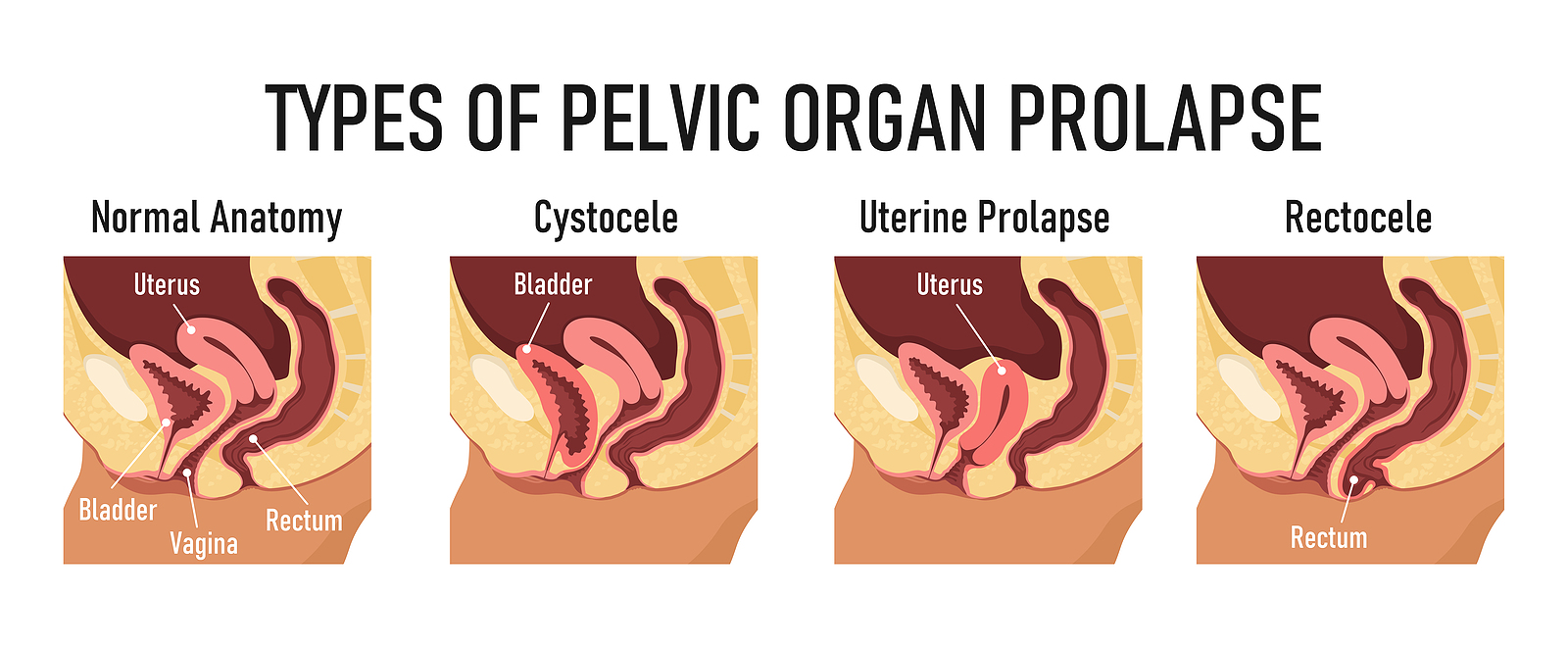PELVIC ORGAN PROLAPSE
PELVIC ORGAN PROLAPSE
When your pelvic floor lacks the strength to fully support your vagina, uterus, bladder, and rectum, one or more of these organs can drop lower in the pelvis or “prolapse.” You may feel a bulge or heaviness in your vagina or worry that something is about to fall out. Don’t worry — PT is proven to help. Let’s restore that pelvic floor! At Origin, we’ve helped hundreds of patients manage and treat prolapse. Get treatment virtually, right from home, or see a PT in our clinics.

FEMY WELLNESS
GET MEASURABLE RESULTS

WHAT CAUSES PELVIC ORGAN PROLAPSE
With pregnancy, your pelvic floor supports a baby for months. Add the strain of childbirth and it can become weak. With menopause, hormonal changes weaken muscles, including the pelvic floor. Other causes of prolapse include chronic constipation or coughing, repetitive heavy lifting or intense exercise, and nerve or muscle disease.

WORK 1:1 WITH A PHYSICAL THERAPIST
Partner with your PT to create a personalized treatment plan to strengthen your pelvic floor. Your plan may include:
- Techniques to reduce pressure
- Coordination & strengthening exercises
- Manual therapy for your pelvic floor
Guidance on using vaginal weights or a referral for a pessary

POWER UP YOUR PELVIC FLOOR
Physical therapy for 12-16 weeks can improve prolapse by 1 grade (with uterine prolapse, that’s equal to the distance from the vaginal opening to halfway to the cervix). You may experience relief from discomfort even sooner.
LET’S GET STARTED!
COMMON & TREATABLE
Prolapse is a common pelvic floor disorder and risk goes up with vaginal delivery, number of deliveries, and age. Physical therapy has been found to improve prolapse, without surgery.
-
"It feels like my vagina is falling out."
-
"It feels like a tampon is stuck in there."
-
"I noticed a bulge in my vagina."
Sources: Vergeldt TF, et al. Risk factors for pelvic organ prolapse and its recurrence: a systematic review. Int Urogynecol J. 2015; Hagen S, et al. Individualised pelvic floor muscle training in women with pelvic organ prolapse (POPPY): a multicentre randomised controlled trial. The Lancet. 2014.
Pelvic Organ Prolapse FAQs
What are the symptoms of prolapse?
You may experience feelings of heaviness or pressure in the vagina, or it may feel as if something is in your vagina, or that your vagina is "falling out." Symptoms are typically worse at the end of the day or with prolonged activity. You may also notice changes in your symptoms during your menstrual cycle.
What are the stages of prolapse?
Stages refer to how low an organ has dropped from its proper position. With uterine prolapse, stage 1 is when the uterus has dropped into the upper half of the vagina. Stage 2 is when the uterus has reached the opening of the vagina. In stage 3, the uterus is protruding out of the vagina. And in stage 4, the uterus has come out of the vagina. This can all sound pretty scary, so it’s important to remember that prolapse can be improved!
Who experiences prolapse?
Prolapse most commonly impacts people who’ve had a vaginal birth or who are going through menopause. Other factors can contribute to someone experiencing severe or mild pelvic organ prolapse at any stage of life.
How long will it take to improve prolapse?
Your symptoms may take up to a few months to improve, though progress depends on the grade of your prolapse, plus your motivation to follow your treatment plan. Also, every body is different and success will depend on the point where you start to feel better.
What is a pessary and how does it help with prolapse?
Apessaryis a ring made out of medical grade silicone that’s inserted into the vagina to provide outward support to all sides of the vaginal wall. This support can reduce or eliminate feelings of vaginal heaviness and leaking. A pessary may take some getting used to, like when you first started using tampons or a menstrual cup. And, just like a tampon, if it’s the right size, you shouldn’t really feel it after it’s been inserted.
What are vaginal weights?
Avaginal weightis about the size and shape of a fresh fig and fits comfortably inside your vagina. To keep it in place, you have to contract the pelvic floor muscles that surround your vaginal canal. Just like doing bicep curls with a barbell, using a vaginal weight can strengthen your pelvic floor, improving its ability to support your pelvic organs.
Is pelvic organ prolapse preventable?
Most people will experience some degree of prolapse in their lifetime, but maintaining strength in your pelvic floor will reduce its severity and reduce uncomfortable symptoms.

FEMY TEAM
Our women's health specialists have helped thousands of patients feel better in their bodies.
